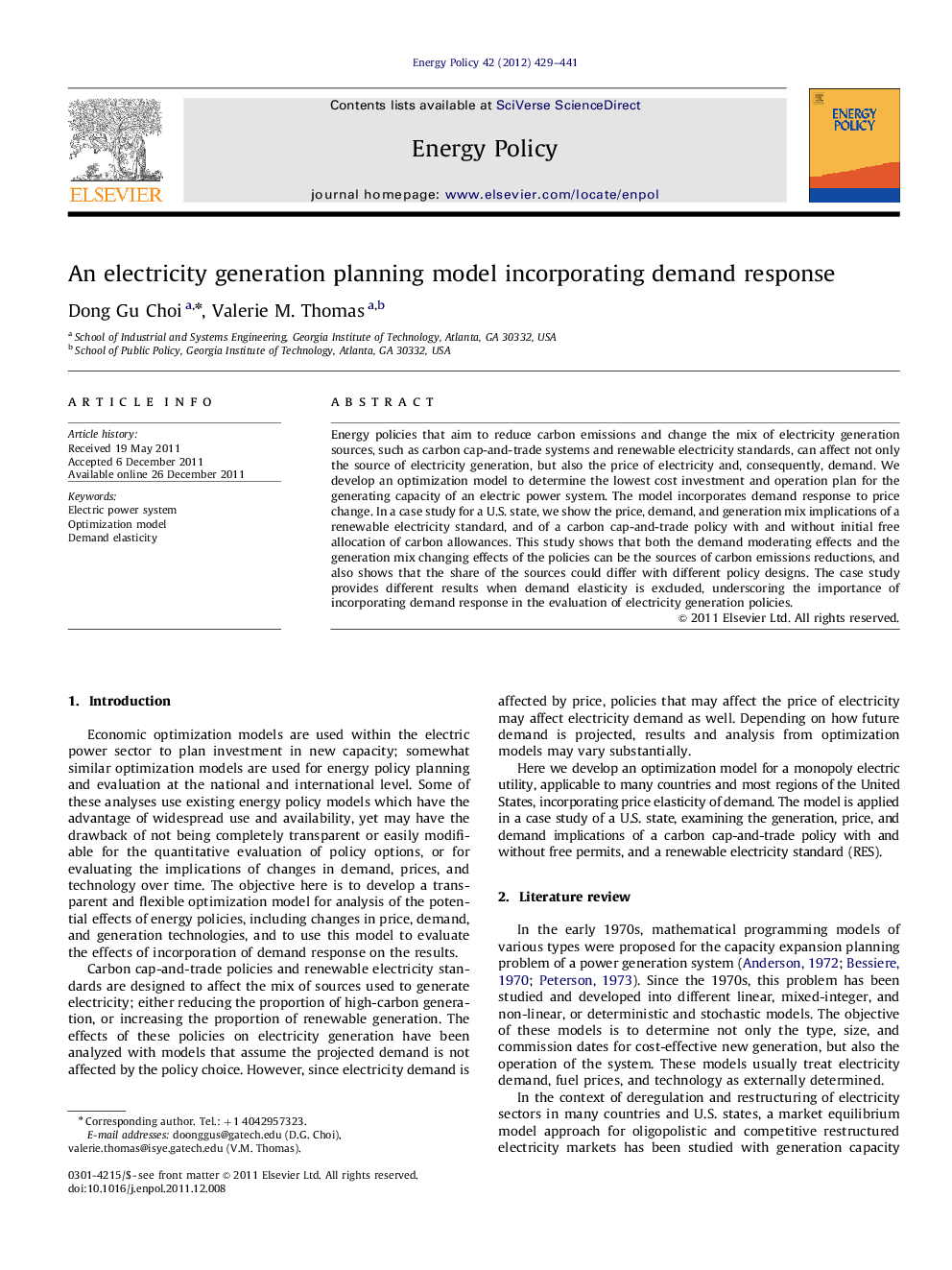| Article ID | Journal | Published Year | Pages | File Type |
|---|---|---|---|---|
| 995781 | Energy Policy | 2012 | 13 Pages |
Energy policies that aim to reduce carbon emissions and change the mix of electricity generation sources, such as carbon cap-and-trade systems and renewable electricity standards, can affect not only the source of electricity generation, but also the price of electricity and, consequently, demand. We develop an optimization model to determine the lowest cost investment and operation plan for the generating capacity of an electric power system. The model incorporates demand response to price change. In a case study for a U.S. state, we show the price, demand, and generation mix implications of a renewable electricity standard, and of a carbon cap-and-trade policy with and without initial free allocation of carbon allowances. This study shows that both the demand moderating effects and the generation mix changing effects of the policies can be the sources of carbon emissions reductions, and also shows that the share of the sources could differ with different policy designs. The case study provides different results when demand elasticity is excluded, underscoring the importance of incorporating demand response in the evaluation of electricity generation policies.
► We develop an electric power system optimization model including demand elasticity. ► Both renewable electricity and carbon cap-and-trade policies can moderate demand. ► Both policies affect the generation mix, price, and demand for electricity. ► Moderated demand can be a significant source of carbon emission reduction. ► For cap-and-trade policies, initial free allowances change outcomes significantly.
